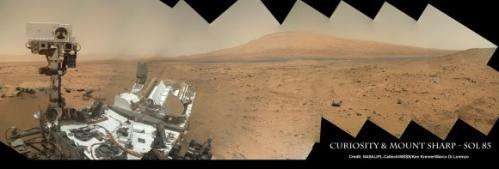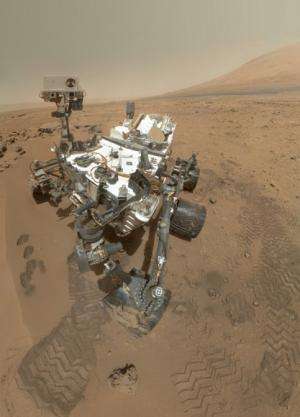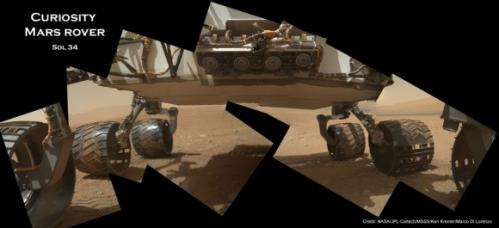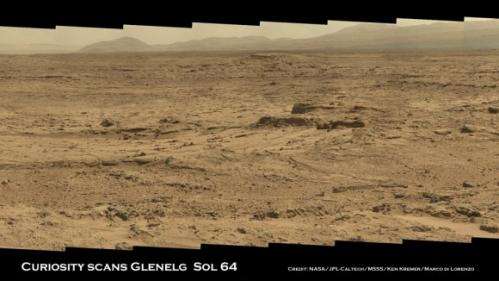Curiosity celebrates 90 Sols scooping Mars and snapping amazing self-portrait with Mount Sharp

NASA's revolutionary Curiosity rover is celebrating 90 Sols on Mars by snapping amazing self-portraits (see our mosaics above and below) and biting into the Red Planet's surface to accomplish unprecedented scientific analysis of an alien world.
Nov. 6 marked a major milestone in Curiosity's daring and evolving mission in search of signs of life. This is the three month anniversary of her toiling on the breathtaking Martian surface since the hair-raising pinpoint touchdown on Aug. 6 inside Gale Crater at the foothills of a humongous and gorgeous layered mountain that likely holds the key to understanding Mars watery past and 4 billion plus year evolution.
The never before seen mosaic vista above shows a matchless self portrait of Curiosity's Mastcam 'head' and body combined with a thrilling scene of her target destination – Mount Sharp – the layered mound of sediments that could unlock the mysteries of whether Mars ever possessed habitats favorable for the evolution of life, past or present.
Last week on Sols 84 & 85 (Oct 31 & Nov 1) Curiosity took hundreds of high resolution color images with the Mars Hand Lens Imager (MAHLI) camera – located at the end of the 7 foot (2.1 m) long robotic arm – thus affording us a breathtaking portrait view of our emissary from Earth to Mars.
Our Sol 85 self-portrait mosaic was stitched together by the imaging team of Ken Kremer and Marco Di Lorenzo. Last week NASA released the first self portrait mosaic of the Sol 84 MAHLI camera imagery that included the left flank of 3 mile (5 km) Mount Sharp.
The Curiosity team spent considerable effort to build the imaging sequences and then remotely maneuver the robotic arm to precisely collect the raw images and transmit them to Earth.

Previously the team used the MAHLI camera to photograph Curiosity's underbelly (see our mosaic).
For the past month Curiosity has been hunkered down at "Rocknest" ripple which lies at the edge of "Glenelg" – her first major science destination – and that sits at the natural junction of three types of geologically diverse terrain.

Rocknest afforded the perfect type of fine grained Martian dust to carry out the first test scoops of Martian soil and then used the material to thoroughly cleanse the robots' sample processing system of residual Earthy contamination and then ingest the first samples into the robots pair of analytical chemistry labs – Chemin and SAM.
Curiosity has eaten into Rocknest 4 times so far and delivered two samples to Chemin for analysis.

Scoop sample #5 should deliver the first solid material to SAM (Sample Analysis at Mars) sometime in the next week or so.
SAM is specifically engineered to search for organic molecules – the building blocks of life as we know it. Chemin uses X-ray diffraction techniques to accurately determine the mineralogical composition of pulverized and sieved red planet soil and rock samples.
Curiosity's key science finding during the first 90 Sols is the discovery of evidence for an ancient Martian stream bed at three different locations along the short route she has traversed so far.
Curiosity found a trio of outcrops of stones cemented into a layer of conglomerate rock. Hip deep liquid water once flowed vigorously on the floogr of Gale Crater billions of years ago. Liquid water is a prerequisite for the origin of life.
The SUV sized Curiosity rover has taken over 22,000 pictures thus far and is funded for a 2 year primary mission.
See more of our Curiosity Mars mosaics by Ken Kremer & Marco Di Lorenzo at PBS Nova TV (airing Nov 14), NBC News Cosmic log and Scientific American.
Source: Universe Today





















